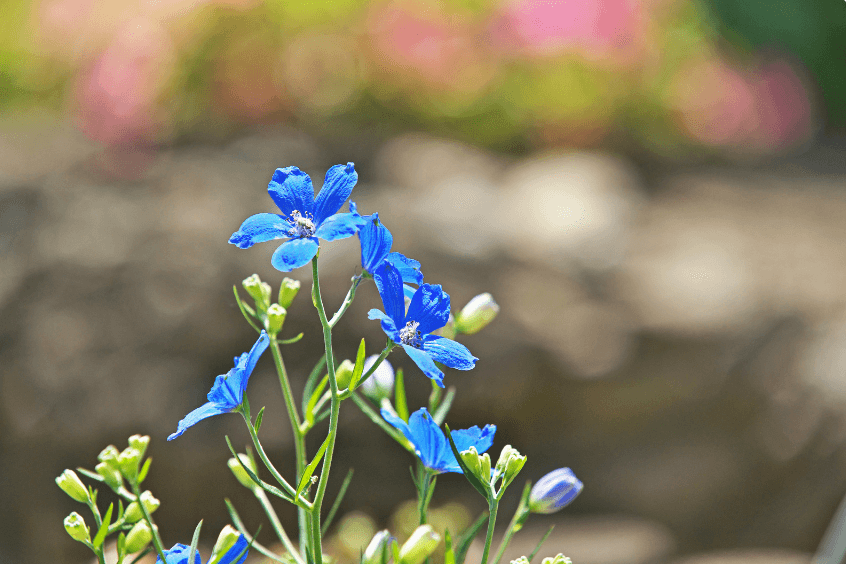
Lithospermum
Share

Common Name Gromwell,Stoneseed,Puccoon
Family Name Boraginaceae
Parts Used Roots,Leaves
Herbal Actions Anti-inflammatory, Antibacterial, Antiviral, Astringent, Wound-healing
Health Benefits Skin Health Improvement, Anti-inflammatory Effects, Antimicrobial Activity
What are the Benefits of Lithospermum?
Vibrant, deep-hued roots of Lithospermum have been utilized for centuries across Asia, particularly in Traditional Chinese Medicine (TCM), as a powerful remedy for skin ailments and for promoting overall skin health.* Energetically, this herb is considered to cool and detoxify the skin, possessing astringent properties that are mild in application. It is a staple in TCM for its effectiveness in treating and improving various skin conditions, including eczema and acne.
Containing naphthoquinones, specifically shikonin, Lithospermum roots are rich in natural compounds that offer anti-inflammatory and antibacterial benefits. This makes them a potent antioxidant capable of soothing irritated skin and accelerating the healing process.* Recognized for its therapeutic properties, Lithospermum is not just confined to medicinal use but is also incorporated into skincare products, such as creams and ointments, which leverage its ability to improve skin texture and appearance. This extensive use underscores why it is traditionally valued beyond simple herbal remedies, finding its place in the broader spectrum of health and beauty treatments.
Historical Use of Lithospermum
Lithospermum, particularly valued for its vividly colored roots, has been integral to various traditional practices across East Asia. Historical records, such as those found in classical Chinese medicinal texts, reveal that Lithospermum roots were highly esteemed not only for their therapeutic properties but also for their spiritual significance. In traditional Chinese culture, the root was believed to possess purifying qualities, used in rituals to cleanse and protect from negative influences.
According to the "Bencao Gangmu" (Compendium of Materia Medica) by Li Shizhen, a revered pharmacopeia of the Ming Dynasty, Lithospermum was considered a symbol of purification and healing. It was often used in traditional medicine to treat skin diseases, soothe inflammations, and promote wound healing, reflecting its dual role in physical and spiritual healing.
Moreover, the rich, red dye extracted from Lithospermum roots was traditionally used in fabric dying, contributing to its cultural significance. This dye was not only prized for its vibrant color but also imbued the fabrics with perceived protective properties, making them popular for use in traditional garments and ceremonial cloths. This historical usage underscores Lithospermum’s role not only in physical wellness but also in cultural and ritualistic practices, echoing its importance in holistic healing and traditional ceremonies.
Botanical Description & Habitat
Lithospermum is a genus belonging to the Boraginaceae family, encompassing various species commonly known as gromwell or stoneseed. These plants are typically herbaceous perennials, though some species are annuals. They range in height, usually between 30 cm and 1 meter, depending on the species.
The leaves of Lithospermum plants are simple, lanceolate to ovate, and arranged alternately along the stem. They are usually hairy, which is characteristic of the borage family. The foliage is often rough in texture with a green to greyish color.
The flowers of Lithospermum are small to medium-sized, funnel-shaped, and usually appear in clusters. They can vary in color from white and yellow to pink and purple, depending on the species. One distinctive feature of some Lithospermum species is that their roots and sometimes their flowers contain a red or purple pigment.
Lithospermum species are found in a variety of habitats, ranging from temperate to subtropical regions. They typically grow in well-drained soils and can often be found in open woods, grasslands, and rocky slopes. Some species are adapted to more arid environments and can be found in prairies and desert margins.
Due to their hardy nature, species of Lithospermum are spread across North America, Asia, and Europe. Each region hosts different species adapted to the specific environmental conditions, making Lithospermum a versatile and ecologically widespread genus.
